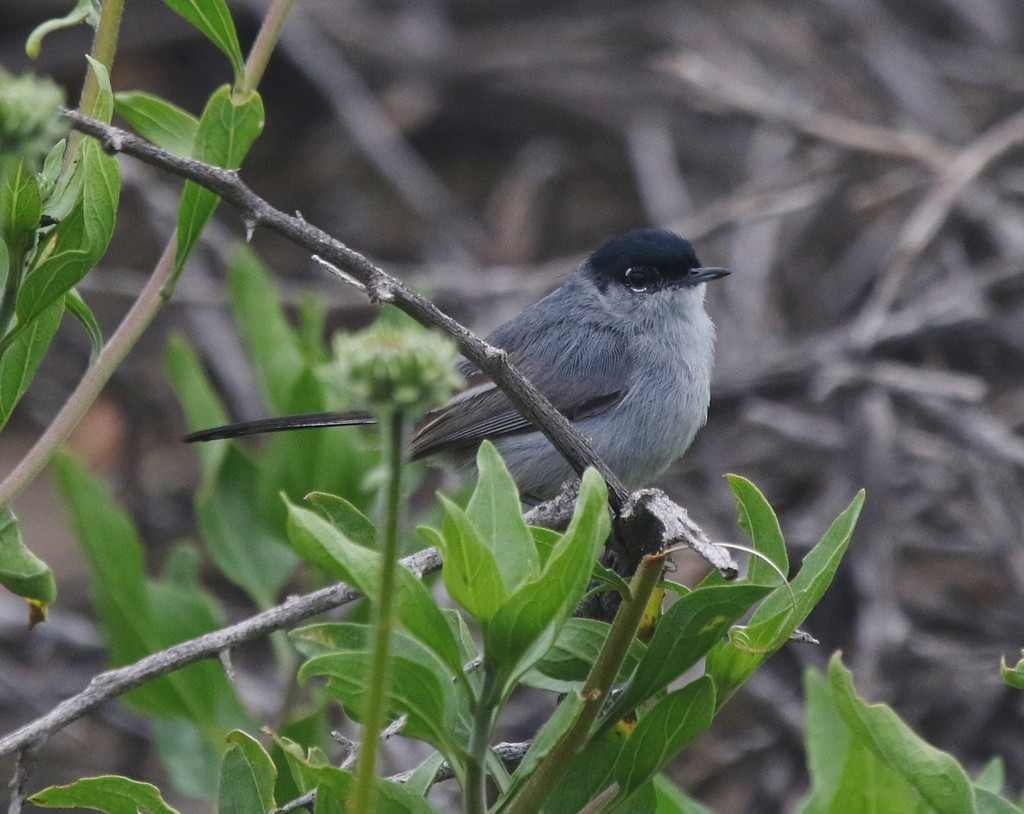California Gnatcatcher
A species of Gnatcatchers Scientific name : Polioptila californica Genus : Gnatcatchers
California Gnatcatcher, A species of Gnatcatchers
Botanical name: Polioptila californica
Genus: Gnatcatchers
Content
Description General Info
 Photo By silversea_starsong , used under CC-BY-NC-4.0 /Cropped and compressed from original
Photo By silversea_starsong , used under CC-BY-NC-4.0 /Cropped and compressed from original Description
The male California gnatcatcher is dusky gray overall, distinguished only by its black crown and thin black beak. It has a long, thin black tail with narrow white tips and edges on the underside of the tail feathers. However, the male loses its plumage colors by winter and obtains a plumage color similar to the females. The female is similar to the male, but with a blue-gray instead of a black crown. In its range from coastal Southern California south through Baja California and Baja California Sur, this inconspicuous non-migratory resident is most often seen flitting hastily into undergrowth, or heard giving its call, which sounds like a kitten's meow, a rising and falling zeeeeer, zeeeeer. 
Size
11 cm (4.3 in)
Life Expectancy
6 years (male), 8 years (female)
Nest Placement
Shrub
Clutch Size
2 - 5 eggs
Incubation Period
1 - 2 broods
Number of Broods
14 days
Nestling Period
10 - 15 days
Feeding Habits
California Gnatcatcher predominantly consume small arthropods like leafhoppers, spiders, beetles, and true bugs. They exhibit foraging behaviors such as plucking insects from foliage or hovering to capture prey. While insects comprise their staple diet, california Gnatcatcher may occasionally feed in non-coastal sage scrub vegetation.
Habitat
California Gnatcatcher thrives in a variety of arid habitats, predominantly found in low elevation regions, typically not exceeding 1,600 feet. Preferring a coastal chaparral biome, its habitat spans California sagebrush, desert scrubs, and coastal dune scrubs. The bird shows a range that includes desert woodlands and diverse scrub variations such as Vizcaíno, Sonoran, and Diegan types. This species favors the dense vegetation of these arid and semi-arid environments, often close to the coast, where it can effectively forage and nest.
Nest Behavior
Both male and female california Gnatcatcher contribute to building the nest, with the male providing the bulk of the building materials. They engage in nest construction and egg-laying within the safety of shrubs, demonstrating shared parental involvement.
Nest Characteristics
The california Gnatcatcher constructs a cup-shaped nest primarily of bark, dried vegetation, and spiderweb, measuring roughly 2.5 inches wide and deep. It is typically located within shrubs, roughly 2.5 feet above ground, on slopes or gullies.
Dite type
Insectivorous
General Info
Feeding Habits
Bird food type
Behavior
California Gnatcatcher demonstrate a lively lifestyle, actively foraging through shrubs, particularly sagebrush, in search of insects. Their days are spent in continuous motion, embodying a deft agility that mirrors a breeze. The distinct mew-like calls of california Gnatcatcher echo from within scrub vegetation, while males are also known to vocalize from more visible locations, often with a characteristic tail flick. Notably monogamous, california Gnatcatcher form enduring pair bonds and defend their territory throughout the year. Territorial disputes see males expelling other males and juveniles, while typically permitting solitary females. Females, too, partake in this defense, mainly targeting females and juveniles, rarely lone males. A peculiar and unfortunate aspect of their breeding behavior includes the parasitism by Brown-headed Cowbirds, leading to the loss of california Gnatcatcher offspring in infested nests.
Species Status
Not globally threatened.
Scientific Classification
Phylum
Chordates Class
Birds Order
Perching birds Family
Gnatcatchers Genus
Gnatcatchers Species
California Gnatcatcher